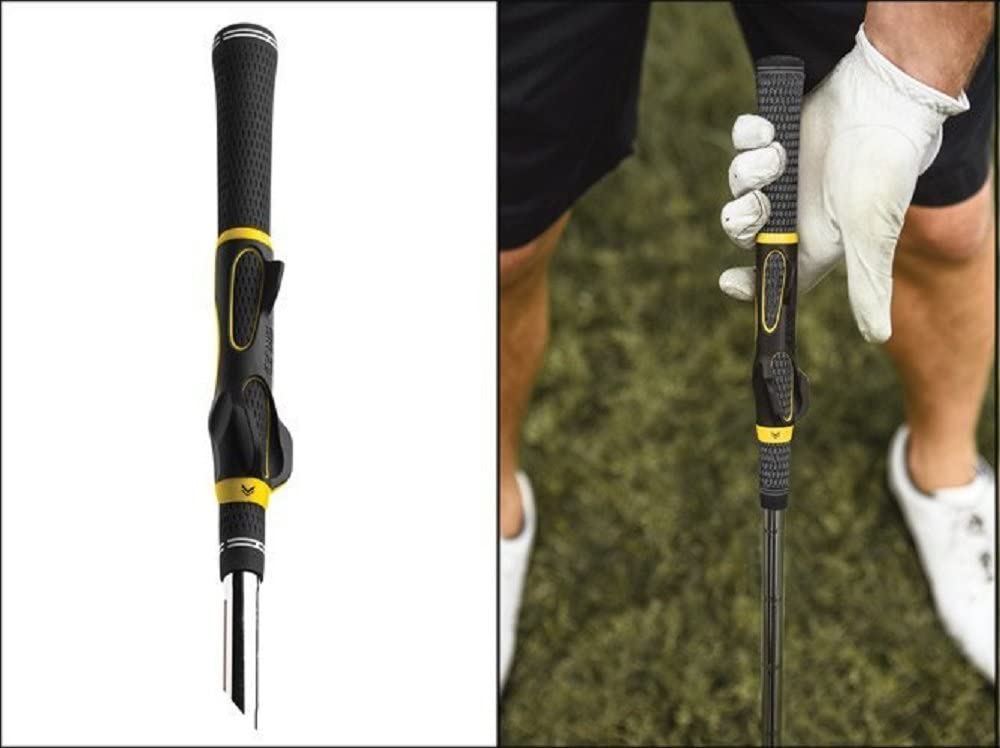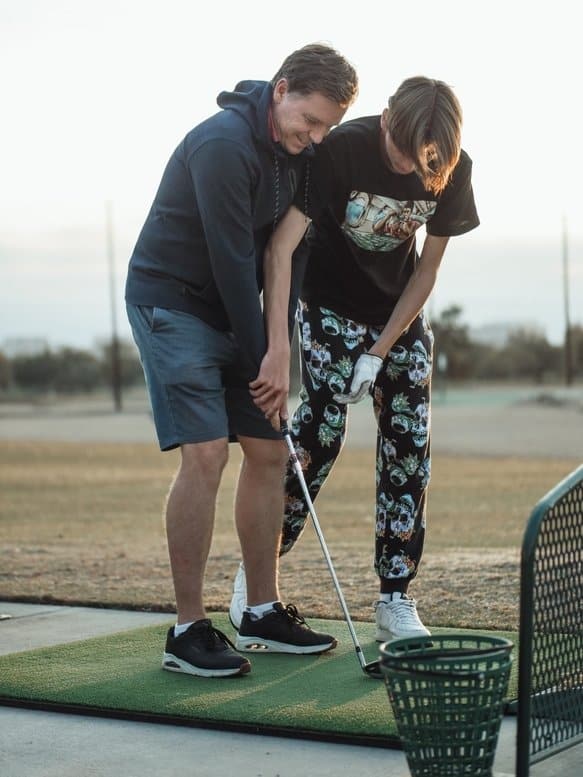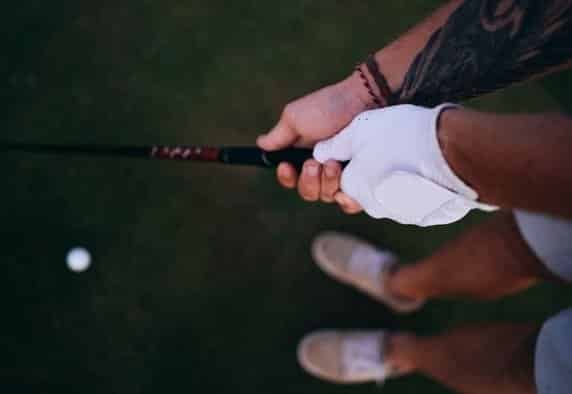A golfing topic that gets a huge amount of attention – despite the fact it’s seemingly such a simple concept – is the golf grip.
Like most sports that involve holding a bat or stick, there are many different ways you can grip a golf club, but is there one that will set you up for success more often than not?
You may have heard about terminology such as strong, weak and neutral in discussions around how to grip the golf club, and each of these ‘styles’ of grip will have flow-on effects to how you swing the club, as well as the results you see in your strike and ball flight.
While you can technically swing a club successfully with any of these three grips, overly strong or weak set-ups can create additional challenges and inconsistent shot patterns.
If you are someone who is struggling with losing the ball to the right or has a nasty duck hook with their driver on occasions, going back to the most basic features of the set up – like gripping the club – could be the reset you need.
I’ve had many a golf lesson that has started with a grip reset; the reason being that over time we are unbelievably good at slinking back into old habits, no matter how hard we try – or how confident we are – that they have been left in the past.
So, how do we ensure our grip is setting us up for success? Let’s take a closer look.
Table of contents
What is the correct way to grip a golf club?
To grip the golf club correctly, allow your left hand to hang with palm facing the grip. Naturally allow your hand to wrap around the club, so that the grip runs from the base of your little finger to the middle of your index finger. The thumb should point down the shaft and you should be able to see two knuckles. The right hand comes to the club with an open palm, as if you were shaking hands with the club. The thumb will wrap slightly over the grip, creating a crease with thumb and index finger that should point to your right shoulder.
There are endless amounts of videos online that run you through this set-up and how to create a fairly neutral grip, geared for hitting straight shots (without accounting for other movements in your swing that can set them off course, obviously).
However, what I find is – like many things in the golf swing and setup – it is just so damn hard to overcome the feeling you have about where the hands should go or what your head habitually tells you to do.
You might think you have the club sitting correctly in your hands, or the crease between thumb and index finger pointing towards your right shoulder, but in fact be miles away.

This is why I think it is vital everyone uses an actual training aid like the SKLZ Golf Grip Trainer Attachment (pictured above) to set their grip and regularly check that previous bad habits haven’t slipped into their set-up.
For example, I have a tendency to get overly strong in my grip, leading to problematic hooks.
If I don’t go to the trouble of resetting my grip regularly with a training aid to overcome my misguided ‘feeling’ that I am set-up correctly, I will think that my grip is OK, wrongly looking for other causes of my hooks.
Some brands also sell ‘tempo trainers,’ such as the Mile High Life Golf Tempo Trainer, which are designed to remove tension from your swing and have specially moulded grips to help you set your hands in the right position – meaning you can hone two skills at the same time.
Should the golf club be gripped in the fingers or palm?
The golf club should be gripped somewhere in between the palm and the fingers, sitting – in the left hand – towards the palm near the little finger, angling more towards the middle pad of the index finger. For the right hand, the club shaft will mainly make contact with the pointer and middle fingers as the palm wraps around the thumb of the left hand.
The left hand – for a right-handed golfer – does most of the work here when it comes to contacting the actual golf grip, hence it receives most of the attention in the ‘palm vs fingers debate’.
Ultimately, if the club is held too far towards either the palm or fingers, it will create issues.
Many people coming from sports like baseball (where the bat is held firmly in the palms) will translate this move to golf, but what I find is this will create a lot of tension, whereas a grip more towards the fingers will be looser, which is necessary for golf.
A desire to hold the club more in the palm is often seen with weaker grips, and could become a recipe for slicing the ball too.
If your grip strays too far into the fingers it will exacerbate cupping of the lead hand, causing the left elbow to flare into the dreaded ‘chicken wing’ position, making it harder to compress the ball with power and leading to weaker shots.
The best way to find this balance between palm and fingers is by using the Grip Solid training aid, a simple little tool that slips straight over the top of a regular glove.
The one-size-fits-all attachment has little ridges that guide your club on the perfect angle from the base of the little finger to middle of the index finger, helping to set the correct habit.
Do you use the same golf grip for driver and irons?
Yes, you should use the same grip for your driver, irons and wedges, as this will help to ensure you have the face of all clubs as close to square as possible through impact. There are some exceptions, however, such as if you have draw or fade biased woods or driver, where you may find these design features exacerbating your natural shot shape.
It is pretty unlikely that you’ll encounter the issue of needing to modify your grip for different clubs, so long as you have had them fitted correctly and choose clubs that suit your game and ball flight.
For example, it would make little sense buying a club which has an inbuilt draw bias if you already struggle with hooks due to a slightly stronger grip.
Additionally, many drivers on the market, such as the PING G425 Max, have sliding weights at the back of the clubhead, so rather than changing grip to counteract a miss left or right, you can make adjustments to the club to try and add bias to a draw or fade.
How hard should you grip the golf club?
The golf club shouldn’t be gripped too hard, as a large amount of tension in the golf swing is going to make it harder to lag the club and swing with a good tempo. At address, you want to aim for a starting grip pressure of about two or three out of 10. This level of grip pressure should be maintained throughout the swing, as less grip pressure in the hands will also reduce tension in the arms and torso, allowing you to turn and rotate more freely.
It is incredibly hard to master the correct grip pressure, given we make ourselves so anxious in golf, especially when standing on the tee of a hole with water or a tight OB fence along the fairway.
Trying to relax our grip pressure in these situations can feel nearly impossible, but will ultimately be a recipe for better golf shots.
One of the best ways to learn to decrease tension in the hands and arms is to play some low stakes rounds without even scoring, perhaps even with cheap balls too.
If you know that carving one out of bounds is only going to cost you $1 and have no impact on a score, you’ll be more inclined to dial back the tension and could actually see improved results.
Another great training aid worth trying out is the Lag Shot Training Aid, a practice club with a super bendy shaft that is designed to improve tempo and increase lag in your swing.
If you grip it really tight with a lot of arm tension, it makes it extremely difficult to swing as the pliable shaft tries to make you slow everything down so the clubhead lags behind the arms.
A few swings on the range or before a round with the Lag Shot trainer can help to set your grip pressure and tempo before playing on-course.
Should you interlock your golf grip?
Yes, you should use the interlocking grip, or possibly even the overlapping grip, to hold the golf club. The interlocking grip sees the right little finger slide in between the left pointer and left middle finger, creating a secure hold of the grip. It is an ideal grip for most golfers, especially those who lack a bit of power or arm strength.
If you find you grip the club too tightly and need to reduce tension in the arms and hands, the overlocking grip, where the right little finger sits on top of the gap between left pointer and left middle finger, is worth a try.
I like the interlocking grip the best as it makes the club feel nice and secure within the hands, something not quite replicated with the overlapping grip.
The overlapping grip feels like there’s undesirable space between the club and the right hand; something that’s not for me.
When interlocking, however, it is important not to go too deep with the connection of the fingers, as this can make things a little rigid and make it harder to swing fluently and release the clubhead as required.
The ‘baseball’ or ‘10-finger grip’ is a very uncommon grip utilised by only a small percentage of golfers.
It sees all 10 fingers wrapped around the club with no overlapping or interlocking, similar to how somebody might hold a baseball bat.
While it can provide a good level of feel given that all 10 fingers are making connection with the club, the hands can detach from one another, rather than working together as one combined unit, something that isn’t going to help your swing much at all.

What is the best golf grip for accuracy?
The best golf grip for accuracy is usually going to be a fairly neutral, interlocking grip, but this can depend on the player and their swing. A neutral grip is going to give you the best chance of hitting straight shots, so long as your swing is on plane and club path aligned towards your target at impact. Combined with a stable, controlled interlocking grip, this combination should create accurate shots.
While there is a best practice way to do most things in golf, varying ways of grasping the golf club will work better or worse for different players, and it is important to find what suits you best and stick with it.
Dustin Johnson uses an extremely strong grip with a bowed left wrist to hit a fade, while Jordan Spieth opts for a very weak grip.
Both are great players, with green Masters jackets to show for it, who sit at opposite ends of the grip spectrum.
If a weak grip, for example, is causing you to slice the ball and miss right a lot, then it is definitely worth considering a change to something more neutral.
But in the end, so long as the grip you use feels comfortable and gives you the desired results, then there is a strong argument that it is the most accurate grip for you.
Final message
There are many ways to grip a club, but like most things in golf, there’s usually one way that is going to give you the best chance at success.
You should consider a training aid to set your grip in the right position, then experiment with stronger or weaker positions if you feel they work for you.
In the end, golf is about hitting the ball straight and getting it in the hole in as little strokes as possible, and whatever grip helps you to achieve this is arguably the right grip for you.


